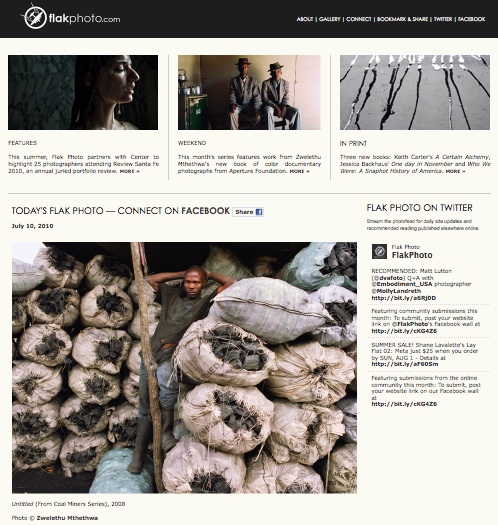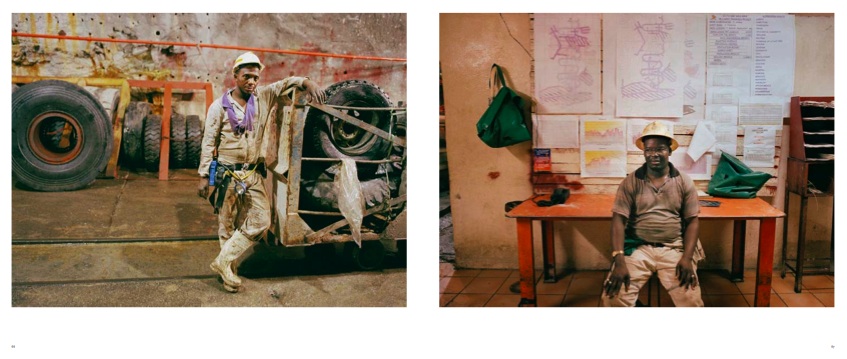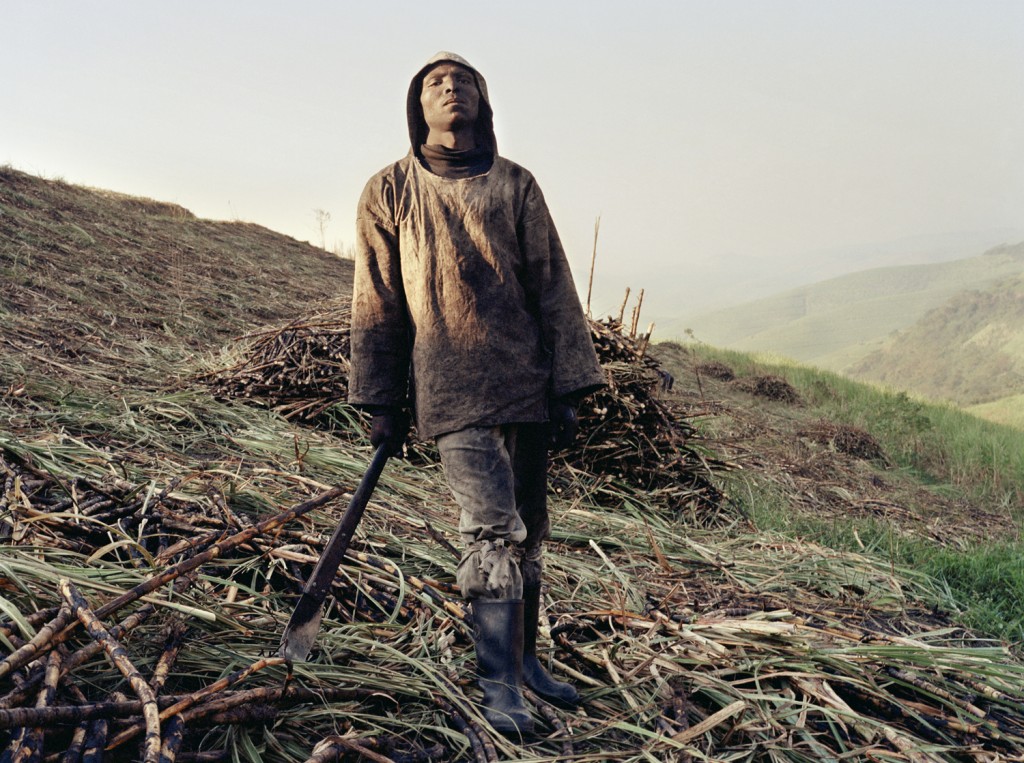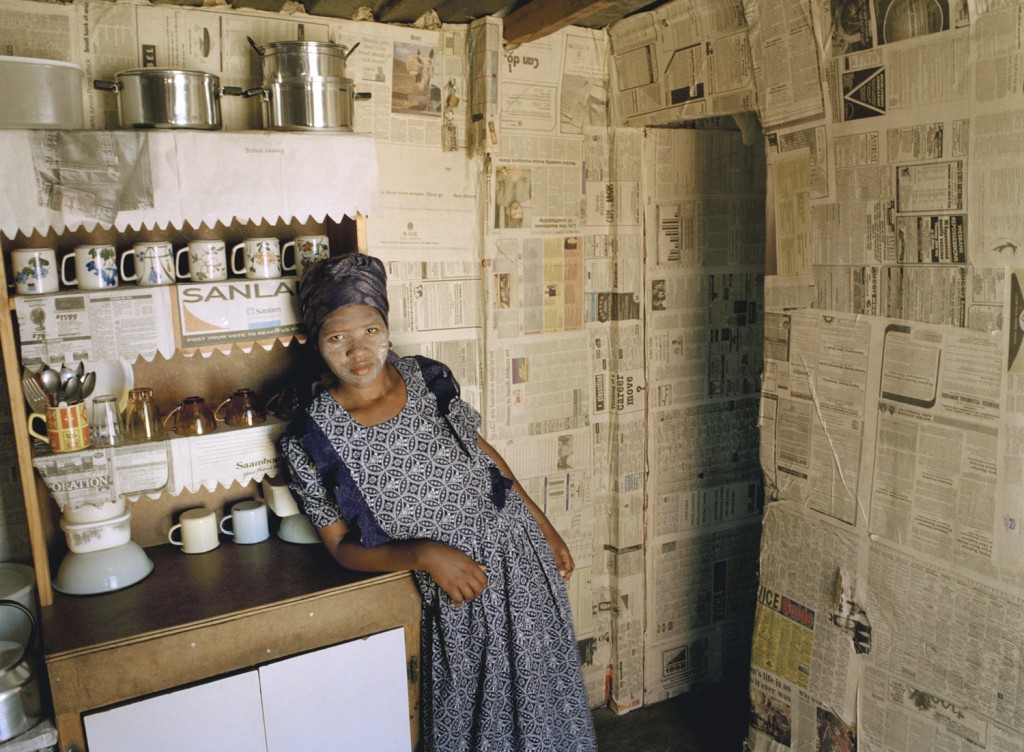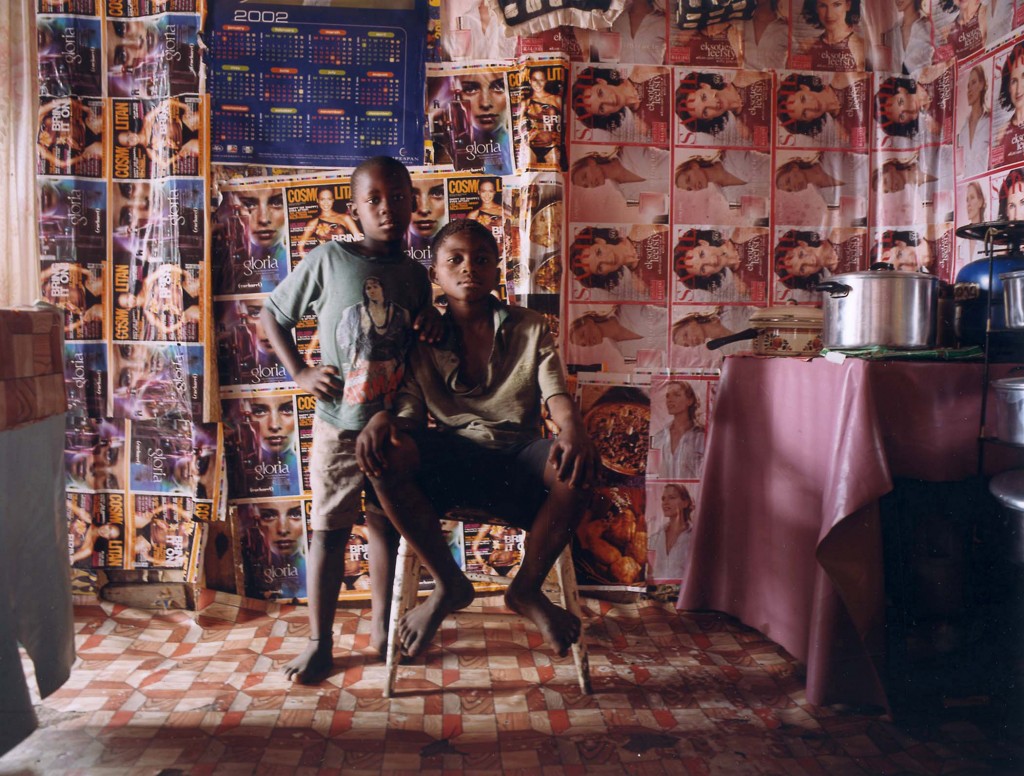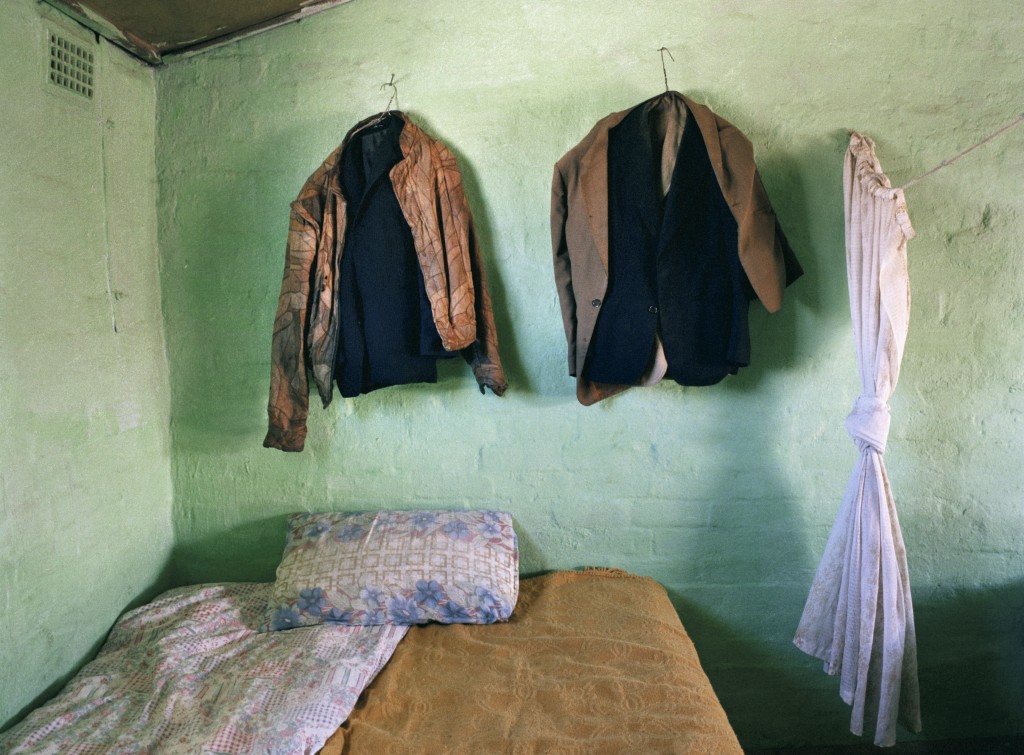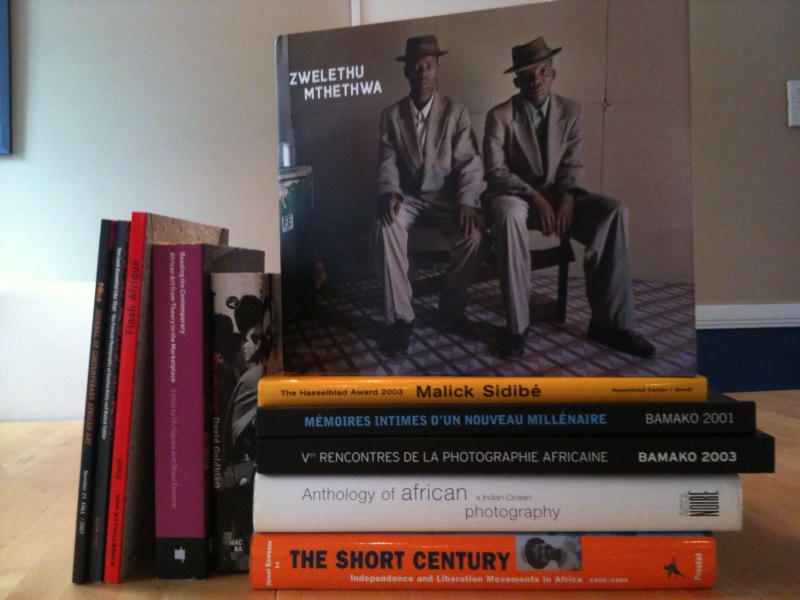FLAK PHOTO: WEEKEND series: Zwelethu Mthethwa
Throughout the month of July, Flak Photo, in its WEEKEND series, is featuring photographs by Zwelethu Mthethwa from his self-titled monograph recently published by Aperture. (Check out each weekend image: JULY 3, 10, 17, 24, & 31, 2010.) It has been my pleasure to team up with Andy Adams again and present this interview with Zwelethu Mthethwa. Mthethwa’s work is pivotal in broadening the discourse on the history of photography and I hope this interview adds to the conversations that have preceded this one; the insightful interview in Zwelethu Mthethwa between Isolde Brielmaier and Mthethwa and the conversation between Mthethwa and Okwui Enwezor at the Aperture Foundation in March 2010. They are essential reading and viewing. I recently corresponded with Zwelethu by email as he prepared to travel from South Africa to the U.S. for the opening of “Inner Views” at the Studio Museum in Harlem on July 15. We talked about his monograph, two specific images from his Sugar Cane series, the South African photography community, and briefly about the current show at the Studio Museum in Harlem.
Larissa Leclair: As an internationally acclaimed artist (photographer, painter, video artist) with over one-hundred solo and group exhibitions, I wonder why it has taken so long for a monograph of your work to be published. Thankfully and finally Aperture recently published the beautiful monograph Zwelethu Mthethwa (Aperture, 2010). While a traditional first monograph primarily includes one body of work, this book is almost like a retrospective exhibition, with work from many series. Can you talk about your journey of finding a publisher and producing this monograph?
Zwelethu Mthethwa: It has been a very long journey. This particular book has been in the making for at least 4 years, but the major reason why nothing like this has been published before is because I was waiting for the right publisher (who would be able to distribute the book internationally). A few people have approached me before, but because they did not have the qualities that I was looking for, I turned them down.
The book presented me with an opportunity to showcase most of my projects over the last 20 years. However, there are some projects that we haven’t included because we were limited in terms of the size of the book.

From the series Interiors, 1995-2005, and Empty Beds, 2002, pages 18-19 ©Zwelethu Mthethwa. Courtesy of Aperture.
LL: Your work as a whole addresses the economic and political reality of marginalized communities primarily in South Africa. Can you talk about your personal interest in these communities and professions (miners, sugarcane workers, etc.). Are you personally an outsider or is there more of a connection to these people and circumstances -politically, economically, culturally?
ZM: The work is about my personal history and personal observation. I grew up in contact with these different communities all the time. I was always interested in how the migrant workers would be ostracised from the main community, which was the community that I came from. The migrant workers were always seen as “the other” – they looked different, talked different, dressed different – they were just so different. As a kid I was curious to understand the dynamics of these differences, mainly because we were all black, I assumed we were all the same. Growing up as an artist I came to realise that I was also an outsider because with my views on life I probably didn’t belong to any of the communities, even the mainstream community.

Untitled (from the Brick Workers series), 2008; Chromogenic print ©Zwelethu Mthethwa. Courtesy of the artist and iArt Gallery, Cape Town.
In terms of my interest in these “professions” I have always been fascinated by the way that people make lives and livings for themselves. Despite economic hardship, political hardship, all kinds of hardship, including that of just trying to fit in, people continue to work and live even in the strangest circumstances. Through my years of experience in photographing these communities I have found out that the periphery after some time becomes the mainstream in the way that fashion follows them, the way that interior decorators decorate their houses and in the way that musicians have developed their sound too.

Untitled (from the Sugar Cane series), 2007; Chromogenic print (Image on page 111 of monograph) ©Zwelethu Mthethwa. Courtesy of the artist and iArt Gallery, Cape Town.
LL: Can you talk about two specific photographs from the Sugar Cane series – the image on page 39 that starts this series in the Aperture monograph, which is also the cover of Snap Judgments (ICP/Steidl 2006), and the photograph included in Enwezor’s essay on page 111. I am curious about how you approached photographing here and the dialog that occurred between you and the workers, and then your internal dialogue as you were photographing. I am struck by the attire, the landscape, and stance – very raw and powerful – and am curious why sugar cane workers wear skirts?
ZM: Approach – first of all, I explained my intentions to the farmers that owned the land. Once they had given me permission to photograph the people working on their land, I then further approached the individual farm workers and explained to them my intentions, so that I could get permission from them to take their photographs. Once they agreed, I then took the photographs; but this was a long process because I would have to fly back to Cape Town, process the photos and then go back to Durban to give the sitters their photographs. It was important to me that they had copies of the images. I would then, while in Durban, shoot some more, and start the whole process again. So this all happened over several months.
My first attraction to the sugar cane workers was that they were wearing skirts, and that they looked to me like Samurai worriers. I then found out that, not only were they wearing skirts, but also many other layers of clothing. This was odd to me because Durban is an incredibly hot and humid area. I thought they must be crazy to be wearing so many clothes and still doing manual labour. I discovered, through speaking with them, that the reason was to protect themselves from the burning ground and soot (sugar cane is burnt before harvested); from the very sharp leaves of the cane; and also from the many snakes that like to live in sugar cane fields. The most difficult part of taking these photographs was stopping them from working. These guys are paid according to the weight of sugar cane that they harvest; there is no hourly rate. I felt guilty that I was interrupting and taking their money away from them by asking them to pose for me. So this forced me to move in and out as quickly as possible, interrupting their flow of production as little as possible.
With regard to the photograph on p.39, it was shot in the afternoon, the clothing that the worker is wearing is quite specific – his hood is obviously to protect him from the harsh sun. His crew neck shirt is there to stop insects from getting into his clothes. His rubber boots prevent snakebites to his feet. He has also tied some rope around his legs above the knee to stop snakes from crawling up his pants.
The other photograph – the reason why they wear skirts: they can’t wear tight clothing because it chafes against the skin, so a skirt is a good way to add another protective layer without the discomfort of the chafing. Underneath the skirt he is wearing loose pants.
LL: Okwui Enwezor mentions in his essay in the book the environment surrounding your study at the Michaelis School of Fine Art at the University of Cape Town in the early 80′s. Was a history of photography class part of the curriculum there? And I am wondering which history of photography? Did you learn about South African photographers and photography?
ZM: There was no history of photography, but photography (practical) was an elective course. I remember people such as David Goldblatt and Omar Badsha visiting the school to talk about their work.
LL: Can you talk about the photography community in South Africa – what was it like in the 80′s, then in the 90′s and now?
ZM: There was always photo-generalism and a rise of documentary photography in the ’80s, which was always black and white photography. Most of the photographers were commissioned by different newspapers or magazines for specific projects, rather than producing their own work in the fine art sense. We are now seeing a beginning of photography being accepted into the realms of fine art in this country, as “new media”. There are a few South African photographers who produce mainly for the galleries. The new photographers are using colour photography as a medium, as opposed to black and white. Their sizes have also changed from the standard 8×10, 16×20 to larger sizes, like 50×50 or even mural-size. There is an interest in presenting photography as limited editions in the most archival form, as opposed to producing photography for the magazine or the newspaper.
LL: Currently you have a solo exhibition at the Studio Museum in Harlem (July 15-Oct 24, 2010). Which series will be on view?
ZM: The work on show at the Studio Museum has been selected by the curator, Naomi Beckwith, and will be presented under the title of “Inner Views.” The selection includes work from the “Interiors” series, “Common Ground” series and “Empty Beds” – all these projects were completed from the early 80s up to 4 years ago.

Untitled (from the Interiors series), 1995 - 2005; Chromogenic print ©Zwelethu Mthethwa. Courtesy of the artist and iArt Gallery, Cape Town.
LL: What projects are you working on now?
ZM: One project I have been busy with recently is shooting power lines in informal settlements the lines have been illegally connected, hooked up to strange makeshift structures, big knots and tangles of cables. These power lines have changed the landscape within the informal settlement, which is a phenomenon that is interesting to me.
LL: Thank you very much Zwelethu!
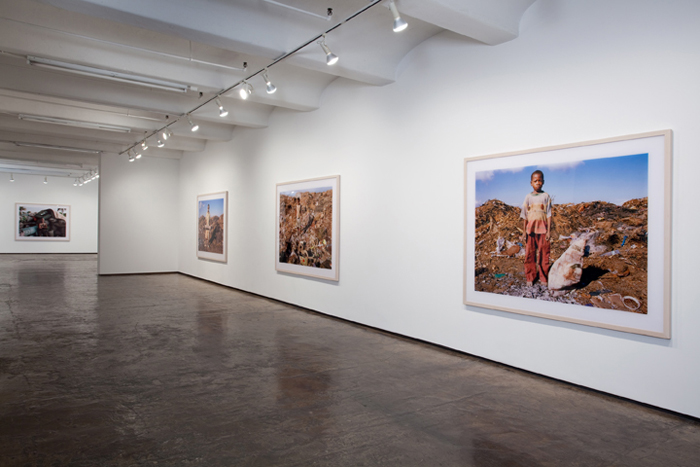
Installation of Zwelethu Mthethwa's fifth solo exhibition at Jack Shainman Gallery in New York - April 23-May 23, 2009. Courtesy of the artist and Jack Shainman Gallery, NY
Zwelethu Mthethwa is represented by Jack Shainman Gallery, New York; iArt Gallery, Cape Town; Everard Read, Johannesburg; Galeria Oliva Arauna, Madrid; Galerie Hengevoss-Duerkop, Hamburg; and Galerie Anne de Villepoix, Paris.
The monograph Zwelethu Mthethwa published by Aperture in 2010 can be purchased here.
For more on Zwelethu Mthethwa, see:
- Zwelethu Mthethwa in conversation with Okwui Enzwezor (March 2, 2010 at the Aperture Foundation) Parts 1, 2, 3, 4
- the Studio Museum in Harlem’s exhibition “Inner Views” – July 15 – October 24, 2010
- The New York Times review of “Inner Views”
- Pete Brook’s Prison Photography blog post “Zwelethu Mthethwa vs. ‘Afro-Pessimism’“
- and watch the video interview below by Tim Noakes with Zwelethu in his studio in Cape Town.
Also check out this list of books on African Photography/Photographers.
Images for this interview were provided by iArt Gallery, Cape Town; Aperture Foundation; and Jack Shainman Gallery, New York. Thank you.
